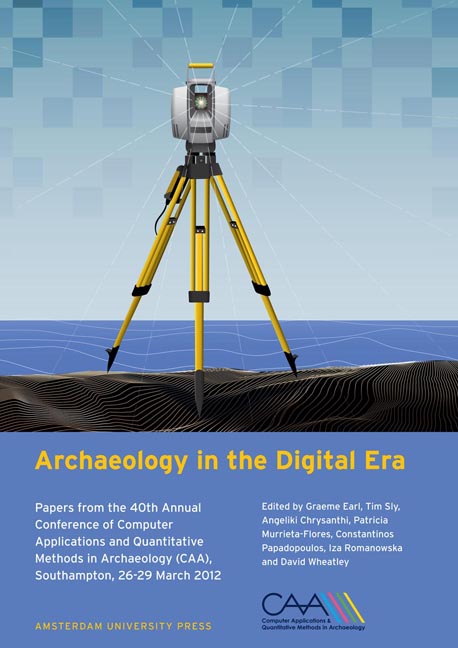 Archaeology in the Digital Era
Archaeology in the Digital Era Telling the Story of Ancient Coins by Means of Interactive RTI Images Visualization
Published online by Cambridge University Press: 16 February 2021
Summary
Abstract:
We present a system to provide an enhanced access of ordinary people to a collection of ancient coins, preserved in the National Museum of San Matteo in Pisa (Italy). Those coins have been digitized to produce RTI representations and are presented to museum visitors together with data telling their story.
The interactive presentation system, designed to be deployed either by a museum kiosk or by a web site, is composed of two integrated sections: a brief introduction to the different subsets of coins; an interactive RTI viewer. The coins are organized in different subsets to better present them to a public of inexperienced visitors. The viewer supports the interaction with the RTI image through a set of functionalities: changing the light direction; zooming; panning over the image; flipping the coin; visualizing hot spots, which link specific areas on the coin with descriptive HTML hypertext.
Keywords:
RTI Images, Ancient Coins, Interactive Kiosk, WebGL, SpiderGL
Introduction
Reflectance Transformation Imaging (RTI) is a computational photography method that, stating from a set of images taken from a single view under varying lighting conditions, encodes the subject's surface shape and colour to enable the interactive re-lighting of the subject from any direction. RTI encodes this redundant data, the same scene sampled under many different lighting conditions, in a compact way, using view-dependent per-pixel reflectance functions.
The virtual examination and study of Cultural Heritage artefacts is taking advantage from the use of the RTI techniques. In this field the way light interacts with the object is very important because the characteristics of the material, reflectance behaviour, and texture offer major perceptual and cognitive hints for the study of a Cultural Heritage object. In many cases the ability to interactively play with the light is often more useful than the manipulation of an accurately sampled 3D shape, that is hardly able to capture all the interesting aspects of the artwork. Furthermore, there are several advantages of RTI technologies compared to 3D scanning techniques: RTI techniques use inexpensive and widely available hardware (in many cases, just a digital camera and light), scale well to both large and very small objects, and are able to easily achieve a sampling density and a precision that most current 3D scanners are unable to reach, even under optimal acquisition conditions.
- Type
- Chapter
- Information
- Archaeology in the Digital EraPapers from the 40th Annual Conference of Computer Applications and Quantitative Methods in Archaeology (CAA), Southampton, 26-29 March 2012, pp. 177 - 185Publisher: Amsterdam University PressPrint publication year: 2014
- 1
- Cited by


